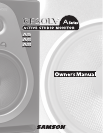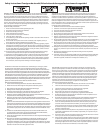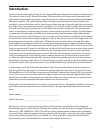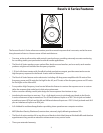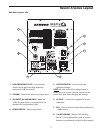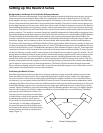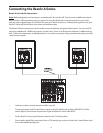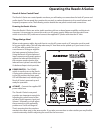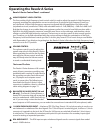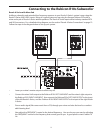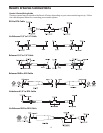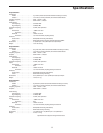
Setting up the Resolv A Series
Background on the Resolv A Series Studio Reference Monitor
The Resolv A Series are self-powered, 2-way, near-field reference monitors, featuring robust power, advanced
electronics and custom designed drive units. For pristine highs, the Resolv A Series boasts a 1.25-inch silk
dome tweeter, set upon a custom designed waveguide. The tweeter’s voice coil is cooled with Ferrofluid and
the use of an external heat sink adds to its increased power handling. The result is a wide, linear response pro-
ducing high frequencies that are sweet, while clear and accurate. For the low frequency response, the Resolv A
Series employs proprietary low frequency woofers with woven carbon fiber cones, butyl surrounds and heavy
duty motors. The woofers are well matched to the tuned enclosures and provide punchy and focused bass fre-
quency response. The monitors’ crossovers have been carefully designed with high quality components insur-
ing a linear frequency and phase response. The Resolv A Series enclosures are constructed from MDF (Medium
Density Fiberboard) and are finished in scuff resistant, vinyl covering with painted gloss black baffles. The
monitor’s enclosures also include a tuned vent port that provides extended low-end response, and with a low
turbulence design, the low frequency driver can move freely with minimal effect on the overall impedance.
On the rear of the enclosure, you’ll find the Resolv A Series control panel, which features a variety of input con-
nections including both XLR balanced input, and a1/4-inch TRS balanced input plus an RCA unbalanced input
on the A6 and A8 and a1/4-inch TRS balanced input plus an RCA unbalanced input on the A5. These inputs are
connected to Resolv A Series internal active crossover and bi-amp power module providing 75 watts of power
for the low frequency woofer and 25 watts of power to the high frequency tweeter on the A 6 and A8. The A5
bi-amp power module provides 50 watts of power for the low frequency woofer and 20 watts of power to the
high frequency tweeter. You will also find the pre-amp controls, including Volume knob, used to adjust the
overall level of the internal power amplifier, as well as the innovative High Frequency Level control. This four-
position switch allows the mix engineer to contour the high frequency response of the monitor thus allowing
you to adjust for room acoustics or listening preference. The Resolv A Series has been designed to provide
flat, accurate monitoring, and at the same time, to provide an adjustable response curve so that the sound of
other popular near-field monitors can be easily emulated.
Positioning the Resolv A Series
Near field monitoring has become the choice of many engineers in large and small studios because it mini-
mizes the effect of room acoustics. This is especially important in today’s project studios since the budget
for room acoustics is often close to nothing. By positioning the reference monitors in the near field (close to
the listeners), you can greatly reduce the effects of room acoustics. The most important considerations when
evaluating the effects of room acoustics are reflective surfaces that are around the monitoring area. These can
include flat tabletops, glass mirrors or framed pictures, large open walls and even the surface of your mixing
console. Mostly all reflecting sound will eventually reach the listening position, but since it is slightly delayed
from the direct source, the result is random cancellation of some frequencies, or comb filtering. If possible,
remove any and all reflective surfaces. You
may also want to hang some acoustic foam
on walls that are close to the monitors. When
positioning the monitors, you’ll want to
set up what is commonly referred to as the
“mix triangle”. In this ideal configuration,
the space between the left and right moni-
tor is equal to the distance from the listener
to each monitor, forming an equilateral tri-
angle. (Figure 1.)
Prime Listening Spot
Equal Distance
Figure 1.
6



